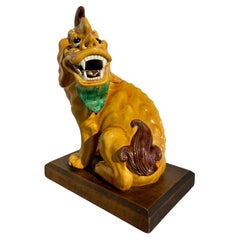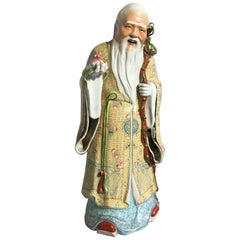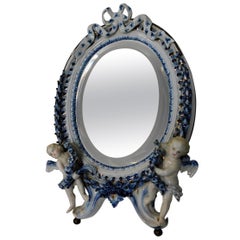Poofs Animal Like
Antique Early 19th Century Chinese Qing Sculptures and Carvings
Porcelain, Wood
People Also Browsed
Early 20th Century Chinese Qing Sculptures and Carvings
Porcelain
Antique Early 18th Century German Rococo Porcelain
Porcelain
Early 20th Century Chinese Qing Sculptures and Carvings
Textile, Wood, Paint
20th Century Chinese Chinese Export Porcelain
Porcelain, Paint
Early 20th Century Chinese Qing Sculptures and Carvings
Lapis Lazuli
Antique Late 19th Century Chinese Qing Textiles
Silk, Plastic
Antique 17th Century Chinese Ming Sculptures and Carvings
Jade
Antique 1890s Chinese Qing Sculptures and Carvings
Wood, Ivory
Antique 19th Century Chinese Furniture
Wood
Antique 18th Century Prints
Paper
1970s Modern Figurative Drawings and Watercolors
Ink
Late 19th Century Modern Figurative Drawings and Watercolors
Watercolor, Ink
Late 19th Century Modern Figurative Drawings and Watercolors
Ink, Watercolor
Late 19th Century Modern Figurative Drawings and Watercolors
Ink, Watercolor
Late 19th Century Modern Figurative Drawings and Watercolors
Watercolor, Ink
Antique 16th Century Chinese Chinese Export Figurative Sculptures
Porcelain
A Close Look at qing Furniture
The last imperial dynasty from 1644 to 1912 was a time of change in China, beginning with the invasion by Manchurian forces that ended the Ming dynasty and established the Shunzhi Emperor. The expansion of exportation and trade that had bolstered the arts during the Ming era continued, as Qing dynasty furniture involved the same attention to craftsmanship with expert construction techniques in hardwood pieces that were assembled with mortise and tenon joints rather than nails or glue. Together, these eras comprise a golden age of Chinese furniture design.
Ming-style furniture is simple and elegant with clean lines. Chairs of the period and other Ming furniture made an impression on Scandinavian modernist Hans Wegner and his streamlined seating, for example. Whereas Qing-style furniture is elaborate, with an increasing influence from the West leading to lavish carving inspired by the European Baroque and Rococo styles. And while many of the forms that define examples of the latter are common within classical Chinese furniture, such as curving and folding chairs as well as large screens, Qing designs are laden with ornamentation. Frequently, the carved motifs and inlaid designs in mother-of-pearl were auspicious, such as peonies for wealth or dragons for luck. Bats were symbols of happiness in the design of Qing furniture, with one of the characters in the word for bat, bianfu, being a homophone for fu, or “fortune.”
While several types of wood were used in the construction of Qing beds, tables, storage pieces and seating, today’s collectors know that the most prized were the rare rosewoods zitan and huanghuali. They were both sourced from Hainan, China’s largest island, and are marked by a rich luster that occurs naturally, without the application of lacquer or other decorative materials. Many of the most popular woods were imported from southeast Asia, adding to their value. Red sandalwood was also sought after for its durability and connection with Chinese medicine, with some chairs being made for health benefits.
Find a collection of antique Qing tea tables, stools, benches, decorative objects and more furniture on 1stDibs.
Finding the Right sculptures-carvings for You
Asian sculptors have worked in materials including wood, bronze and jade. Artists and artisans have used traditional techniques to depict deities, scenes from culture and more, and today, antique Asian sculptures and carvings are a popular choice for provocative and sophisticated home decor.
In China, the Qing dynasty, from the mid-17th century to the early 20th century, brought about significant changes in art while preserving traditional culture. Many emperors during this period were patrons of the arts, such as painting, calligraphy and decorative arts. This era saw the building of new Buddhist temples, which were decorated with statues. Some of these sculptures were adorned with colorful cloisonné decoration, in which tiny compartments, or cloisons, made by soldering copper filaments to a metal surface were filled with vibrantly hued enamel.
From the 17th to mid-19th century in Japan, kimonos were worn across classes and often fastened with a netsuke, a type of small carved toggle. Artists carved these from ivory, wood, shells and coral, creating animals, flowers and mythical creatures. During the Japanese Meiji period, spanning from 1868–1912, the country began trading internationally after centuries of isolation, allowing artists to sell their work overseas. Bronze sculpture flourished around this time for creating teapots, vases and incense burners.
Asian sculpture continued to evolve in the 20th century. During the Japanese Shōwa era, from 1926–89, art was influenced by international modernist movements like abstraction, Futurism and Surrealism. Contemporary Asian sculptures and carvings continue to combine global influences and a rich heritage of technique.
Decorating a space with Asian sculptures and carvings is a great way to add interest to any corner of your home. Explore by material, period or style on 1stDibs.


